Chatter Marks
Chatter Marks is a podcast of the Anchorage Museum, dedicated to exploring Alaska’s identity through the creative and critical thinking of ideas—past, present and future. Featuring interviews with artists, presenters, staff and others associated with the Anchorage Museum and its mission.
Episodes
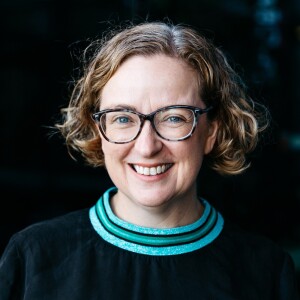
Wednesday Oct 25, 2023
Wednesday Oct 25, 2023
Kristin Alford is a futurist and the director of the Museum of Discovery, or MOD., in South Australia. She says that MOD.’s main objective is to showcase innovative research that imagines multiple futures. This idea of imagining multiple futures involves anticipating where society and nature might be headed based on past and current trends. She says that it’s about understanding and recognizing opportunities, risks and downsides, and then thinking about the unintended consequences or possible actions that can be taken. In showcasing these futures, MOD. hopes to inspire young people to learn more about where technology, ethics and social issues might be headed so that they can make better decisions for their own futures.
When putting together an exhibition, one of MOD.’s main tenants is for people to leave with a feeling of hope, not one of anxiety or depression. Because these are big issues they’re tackling — populating other planets, climate change, the future. Next year, they’re opening an exhibition called Broken, about the general feeling of anxiety and ambivalence about the future. In order to instill hope in this exhibition, people are asked a series of questions based on psychologist Charles Snyder’s Elements of Hope: “Do you have a positive vision of the future that brings you forward?” “Do you feel positive about that vision?” “Do you feel like you have agency to make a difference?” And, “Are there multiple pathways for you to reach your goal?”
In this Chatter Marks series, Cody and co-host Dr. Sandro Debono talk to museum directors and knowledge holders about what museums around the world are doing to adapt and react to climate change. Dr. Debono is a museum thinker from the Mediterranean island of Malta. He works with museums to help them strategize around possible futures.
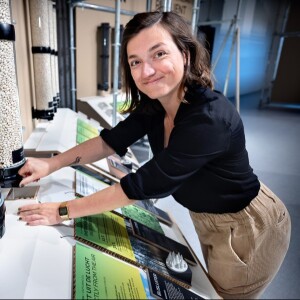
Thursday Oct 12, 2023
Thursday Oct 12, 2023
Until recently, Lizzy Bakker was the senior exhibition maker at NEMO Science Museum in Amsterdam. NEMO is all about interacting with science and technology in order to better understand the world around us, to make its visitors curious about the mechanisms that shape their lives. It turns out, exhibition design conveys a lot. Research carried out by NEMO found that if an exhibition has an unsustainable look and feel to it — ultimately an unsustainable design — then people won’t take the message seriously. So, it’s important for them to work toward creating exhibitions that are as sustainable as possible.
Right now, NEMO is focused on sustainability and the climate crisis. This year, staff came together to create The Green Team, a cohort dedicated to putting sustainability high on the museum’s agenda. Among other things, this means creating sustainable exhibitions — reusing parts of previous exhibitions for future ones, for example. It also means helping to create exhibitions that talk about the climate crisis. Currently they have an interactive exhibition called Energy Junkies where you can make decisions about the world’s energy system that will determine a more or less sustainable future. The idea is for people to understand the climate crisis and how energy production is related to it, and the different solutions that are available for individuals, businesses and governments.
In this Chatter Marks series, Cody and co-host Dr. Sandro Debono talk to museum directors and knowledge holders about what museums around the world are doing to adapt and react to climate change. Dr. Debono is a museum thinker from the Mediterranean island of Malta. He works with museums to help them strategize around possible futures.
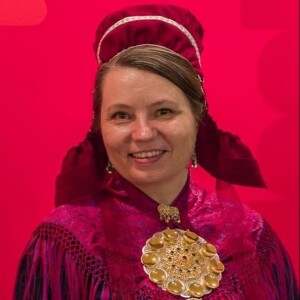
Saturday Sep 23, 2023
Saturday Sep 23, 2023
Anne May Olii is the Director of the largest Sámi museum in Norway, RiddoDuottarMuseat. The museum manages photographs, art and information on Sámi cultural heritage. Anne May says that the museum is thinking 100, 200 years into the future, about how what they’re documenting today will affect and inform Sámi people in the future. For example, the vitality of reindeer husbandry — something the Sámi people have been practicing for generations — is a concern. On top of climate change causing diminishing grazing areas, the Norwegian government is taking land from the Sámi people by putting things like windmills and power lines on their land.
Anne May says that the museum is focused on documenting these changes, to keep a record of the past and the present in order to inform the future. That there’s a strong possibility that northern countries will be looked at for guidance in a future affected by climate change. She has a vested interest in Norway. In addition to her work at the museum, she’s a farmer, her husband is a reindeer herder, her kids are farmers and reindeer herders, and she’s of Sámi heritage.
In this Chatter Marks series, Cody and co-host Dr. Sandro Debono talk to museum directors and knowledge holders about what museums around the world are doing to adapt and react to climate change. Dr. Debono is a museum thinker from the Mediterranean island of Malta. He works with museums to help them strategize around possible futures.
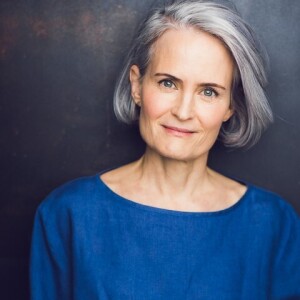
Sunday Sep 17, 2023
Sunday Sep 17, 2023
Miranda Massie is the Director and founder of the Climate Museum in New York City. The Climate Museum uses the power of arts and cultural programming to create an ongoing and progressive conversation surrounding the climate crisis. Her institution is committed to inspiring climate activism through art. The work she and her crew does invites people to recognize their own ability to act on climate change. It’s an advocacy museum, she says, where they hope their audience will take action, to consider themselves as climate ambassadors who actively engaged in climate change action.
Miranda says that appealing to a rationalist perspective doesn’t work. That’s actually how she found her way to creating the Climate Museum. It was 2012 and Hurricane Sandy was wreaking havoc on New York City. She lives in the city, so she watched as the effects of climate change were brought to her front door. Before that, she had understood climate change on a rational level, but faced with the destruction caused by the hurricane she was compelled — emotionally — by the urgency and the challenges of the climate crisis. So, she made a radical shift, she quit her job as an attorney and created the Climate Museum. Her mission then as it is now, was a deep civic shift toward climate dialogue across people’s personal and professional lives. A ubiquitous understanding and acceptance of the crisis that will lead to meaningful climate policy.
In this Chatter Marks series, Cody and co-host Dr. Sandro Debono talk to museum directors and knowledge holders about what museums around the world are doing to adapt and react to climate change. Dr. Debono is a museum thinker from the Mediterranean island of Malta. He works with museums to help them strategize around possible futures.
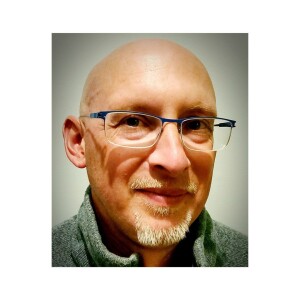
Thursday Aug 31, 2023
Thursday Aug 31, 2023
Lath Carlson is the Executive Director of the Museum of the Future in Dubai. The Museum of the Future is dedicated to telling stories about how humans might adapt to current global crises. Right now, the climate crisis is the most pressing issue. For example, the main story takes people on a journey to 2071, where they experience a world where people have adapted to climate change by collecting solar energy from the moon and beaming it back to earth, giving clean energy to the majority of the world. In order to ensure the science behind these ideas, the museum worked with collaborators from around the world who vetted the science, including people at NASA and at the European Space Agency. Recently, Stanford University proved that this technology wasn’t just something created by a museum, it was actually possible.
The Museum of the Future opened its doors in 2022 and since then over 20 world leaders have visited. Lath says that this is important because climate change is an issue that requires international collaboration. These leaders are among the ones in a position to make changes that will positively impact their countries. Because climate change is an issue that requires large-scale structural changes, the best thing individuals can do is lobby their governments for change. Lath goes on to say that the best hope we have for addressing some of these complex challenges is more Indigenous knowledge than scientific understanding because scientific understanding and reductionist understanding is, in a lot of ways, what got us to where we are today.
In this Chatter Marks series, Cody and co-host Dr. Sandro Debono talk to museum directors and knowledge holders about what museums around the world are doing to adapt and react to climate change. Dr. Debono is a museum thinker from the Mediterranean island of Malta. He works with museums to help them strategize around possible futures.
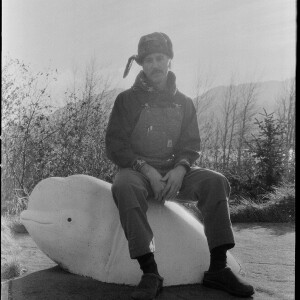
Thursday Aug 31, 2023
EP 68 Frances changed my life with John Gourley
Thursday Aug 31, 2023
Thursday Aug 31, 2023
John Gourley is the lead singer and rhythm guitarist of Portugal. The Man. He grew up in a cabin in Trapper Creek, Alaska, living close to the land. His parents ran the Iditarod — a 1,000 mile-long sled dog race through some of the most treacherous conditions in the world. It takes skill, endurance and fortitude. For John, it’s a lot like being in a band, but instead of making it to Nome, they’re trying to make it to their next gig. It’s its own endurance race that really only considers the present. It’s a lifestyle that lands somewhere between frugality and stardom. Between spending a dollar a day on food in their leaner times and performing at Red Rocks and Radio City in times of prosperity. It’s been a journey that was never about winning a Grammy or critical acclaim, it was always about the music.
John says that when he writes music, he thinks of snowboarding. Of cliffs, jumps, rollers and powder. Hatcher Pass — the mountains John grew up hiking and riding — is in his rhythm and the lyrics. That association is intuitive for him. Simply put, throwing yourself off a cliff or off a jump is like throwing yourself into music and performing. Sometimes you lose and sometimes you win. But you learn from your failures and you’re buoyed by your wins. And it’s in those winning moments that give you the strength and the reassurance to continue. Like snowboarding or the Iditarod, there are always gonna be struggles, but it’s how you work through those struggles that define you.
This new album, “Chris Black Changed My Life,” was marked by struggle and uncertainty. Three band members went to rehab, John broke his jaw, their good friend Chris Black passed away and John and Zoe’s daughter Frances was diagnosed with DHDDS, a rare neurodegenerative disease. It’s been a lot, and navigating it is ongoing. The three who went to rehab are doing much better now and John’s jaw is on the mend. Chris is missed and thought about often, and after an exhausting amount of research, Frances is in treatment.
Photo by Maclay Heriot

Sunday Jul 30, 2023
Ep 67 Culture comes from our environment with Cordelia Qiġñaaq Kellie
Sunday Jul 30, 2023
Sunday Jul 30, 2023
Cordelia Qiġñaaq Kellie specializes in cross-cultural communications. It’s a position that gives her the space and the opportunity to learn about how cultures interact at the community level. For the last two years, she’s worked as the Special Assistant for Rural Affairs for Senator Lisa Murkowski, where she helps to build and strengthen regional and statewide rural and Alaska Native relationships.
She says that in her line of work people often use the term “cultural conflicts” to describe disagreements that arise because of different values and belief systems. However, she prefers the term “cultural contrasts” because not all the time do those things conflict. She gives an example: Whenever her mom’s Inupiaq family would visit, she was expected to tend to and revere her elders, whereas when her dad’s parents would visit from Washington state they wanted to tend to the children. She recognized that these behaviors weren’t in conflict, each one just had a different set of expectations. So, it’s important to learn and to talk about the contrasts before they become conflicts. It comes down to recognizing, understanding and respecting other cultures — their values and their tenets.
Cordelia grew up in Wasilla. The first time she visited the lands of her heritage — Utqiagvik and Wainwright — she was a young adult. She remembers seeing the environment that her mom had been describing to her for so long and how striking it was. Her biggest takeaway was seeing other Inupiaq people. It was her first time in an Inupiaq community and so much of it reminded her of her family. It gave her an incredible sense of belonging because until that point the only other Inupiaq people she encountered were part of her family. It was the first time she realized that she was part of this bigger network of people.
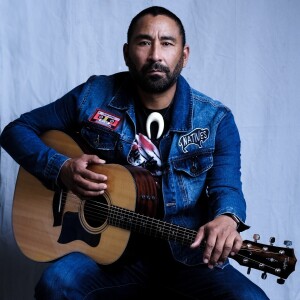
Sunday Jul 23, 2023
EP 66 Inuit soul music with Qacung
Sunday Jul 23, 2023
Sunday Jul 23, 2023
Qacung and his brother, Philip, started Pamyua almost 30 years ago. The idea was to honor both sides of their heritage — African American on their dad’s side and Yupik Inuit on their mom’s side. The gospel music they heard in church and the traditional songs and dancing they experienced in their Native communities made a powerful impression on both of them. In fact, Pamyua’s sound would eventually be called tribal funk or Inuit soul music, and their performances looked a lot like a traditional ceremony with music and dance. The idea connected with people from the very beginning. Two weeks after they came up with the idea for Pamyua, they were performing in front of high school audiences, including the school they both graduated from, Wasilla High School. There were ten shows in all and they received $1,000 for all of their performances.
The only doubt Qacung and his brother, Philip, had in the beginning of Pamyua was whether or not their elders would accept it. They understood that they were making drastic changes to traditional dances and traditional songs. Their elders’ stamp of approval came quickly, though, and from that point on they never had any doubts that people would accept and enjoy their music and their performances. Qacung says this is because music is an international language, you don’t need to understand the Native languages being spoken or sung to receive its message.
Qacung says that he and his brother have become uncles to up-and-coming Native artists. They share industry knowledge, opportunities and even their own pitfalls throughout the years so that future generations have a better understanding of what works and what doesn’t work. It’s a position he takes pride in. He loves being able to advocate and support new artists on the ins and outs of the business end of things because it’s something he and Philip didn’t have.


